#island fox (urocyon littoralis)
Text
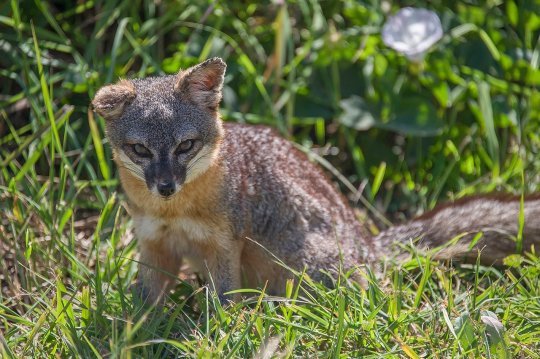
🟪 ANIMAL OF THE DAY: island fox. Urocyon littoralis. literally only found on the Channel Islands of California. each island has its own Unique Subspecies. however, i am sorry to report that His Ass Does Not Vote In Elections. do not listen to his opinions on Twitter
874 notes
·
View notes
Text

A Santa Cruz island fox (Urocyon littoralis santacruzae) on Santa Cruz Island, California, USA
Island foxes (Urocyon littoralis) have six subspecies, each one unique to a Channel Island off the coast of California
by marlin harms
#santa cruz island fox#island fox#foxes#canines#urocyon littoralis santacruzae#urocyon littoralis#urocyon#canidae#carnivora#mammalia#chordata#wildlife: california#wildlife: usa#wildlife: north america
275 notes
·
View notes
Photo
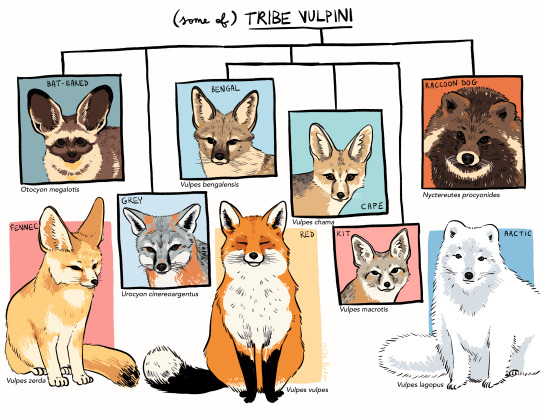
made a lil info sheet of foxes for a friend... better fox taxonomy under the cut if anyone is interested hehe (the grey fox is not part of tribe vulpini i just like them)
(secret third thing neither canini nor vulpini considered basal to all living canids)
Urocyon
U. cinereoargenteus, Grey Fox
U. littoralis, Island Fox (not pictured)
TRIBE VULPINI
Otocyon
O. megalotis, Bat-Eared Fox
Nyctereutes
N. procyonides, Raccoon Dog
N. viverrinus, Japanese Raccoon Dog (not pictured)
Vulpes (“True Foxes”)
V. zerda, Fennec Fox
V. bengalensis, Bengal Fox
V. vulpes, Red Fox
V. chama, Cape Fox
V. macrotis, Kit Fox
V. lagopus, Arctic Fox
V. cana, Blanford’s Fox (not pictured)
V. corsac, Corsac Fox (not pictured)
V. ferrilata, Tibetan Fox (not pictured)
V. pallida, Pale Fox (not pictured)
V. rueppellii, Rüppel’s fox (not pictured)
V. velox, Swift Fox (not pictured)
4K notes
·
View notes
Note
🥚 I'm pretty basic lol I love dogs cats foxes and caterpillars & butterflies

island fox! (Urocyon littoralis)
96 notes
·
View notes
Text
Urocyon littoralis
Channel island foxes aren’t in the vulpes genus, which means they aren’t really foxes. They’re one of many “false foxes,” which includes the bat-eared fox, the crab-eating fox, and the grey fox. The channel island fox shares the urocyon (which essentially means “tail dog”) genus with the larger grey fox, which is its ancestor.
Grey foxes live on the mainland of the United States, while island foxes live exclusively on six of California’s eight Channel Islands: Santa Rosa, San Clemente, San Nicolas, San Miguel, Santa Catalina, and Santa Cruz. Because they can’t easily travel between islands, six subspecies of island fox have developed, each one exclusive to and named after each of those six islands.

Roughly the size of a house cat, the island fox is one of the smallest canines in the world but is, ironically, the largest native mammal of the Channel Islands. Having no natural predators (multiple subspecies were nearly hunted to extinction by the invasive golden eagle in the late 1900s to early 2000s. A successful conservation project later reestablished their population and removed golden eagles from the area.), they are extremely bold and show no fear around people, completely the opposite of their elusive larger ancestor.
Like the majority of fox species, island foxes are omnivores and will eat whatever is available. This includes fruit, fish, rodents, plants, and bird eggs, which, just like the grey fox, they can climb into trees to search for.

The social structure of the island fox is similar to that of many fox species. Pairs are generally monogamous, meaning they mate for life, and they share a small territory that oftentimes overlaps with their relatives’ territories.
I rate the island fox 20/10. Adorable




2K notes
·
View notes
Text
The Enigmatic Island Fox: A Tale of Survival and Conservation
Nature Conservancy
In the rugged, isolated beauty of California’s Channel Islands, a small, curious creature scampers through the chapparal, playing a crucial role in the archipelago’s ecosystem. It’s the Island Fox (Urocyon littoralis), a species that encapsulates both the vulnerability and resilience of island ecosystems.
The island fox only lives on six of the eight Channel Islands off the…

View On WordPress
2 notes
·
View notes
Text

Gray Fox (Urocyon littoralis)
The Gray Fox has been sometimes referred to as one of the most cat-like of the foxes, despite not being a "true fox". The Gray Fox is actually part of the Canidae family, being more closely related to dogs. Despite this fact, Gray Foxes are in fact very quick and nimble. They have semi-retractable claws which allow them to climb trees.
Unlike Vulpes foxes, the Urocyon littoralis have oval pupils (instead of slit-like pupils). And unlike the Red Fox, the Gray Fox does not don the iconic black stockings. Another distinct difference is a stripe of black fur that goes down the fox's back to the tip of it's tail.
The Gray Fox and the Island Fox are the only living members of the Urocyon genus (which is considered genetically basal to all other canids).
The Urocyon littoralis is currently considered to be Least Concern by the IUCN.
2 notes
·
View notes
Video
Grey Fox - Three Pups by Len Radin
Via Flickr:
A family of two adult and three immature grey fox live in a den in the ground in our back yard just twenty feet from our house. These are the pups. (from Wikipedia) The gray fox (Urocyon cinereoargenteus) is a carnivorous mammal of the family Canidae ranging throughout most of[3] the southern half of North America from southern Canada to the northern part of South America (Venezuela and Colombia).[1] No other canid's natural range spans both North and South America and it is the only American canid that can climb trees.[4] This species and its only congener, the diminutive Channel Island fox (Urocyon littoralis), are the only living members of the genus Urocyon, which is considered to be the most basal of the living canids.[5] Though it was once the most common fox in the eastern United States, and still is found there,[3][6][7] human advancement and deforestation allowed the red fox to become more dominant. The Pacific States still have the gray fox as a dominant. Its specific epithet cinereoargenteus means 'ashen silver'. Tenuous Link: animal babies
1 note
·
View note
Text
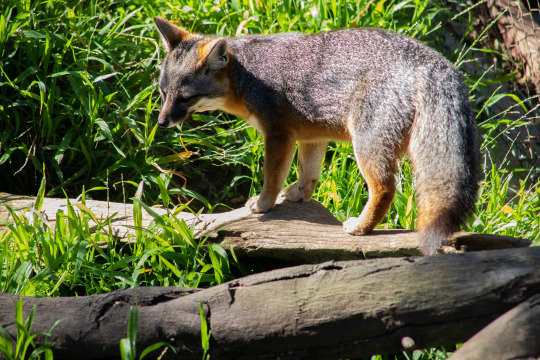
Island Fox (Urocyon littoralis)
taken at the Santa Barbara Zoo in Santa Barbara, California
status: Near Threatened
These small foxes (one third the size of their mainland grey fox relatives) are unique to six of the Channel Islands off the coast of California. Each island's foxes are unique enough that they are each recognized as their own subspecies.
#Island Fox#Urocyon littoralis#fox#animal#wildlife#santa barbara zoo#santa barbara#zoo#photo#photography#canon#canon eos 6d mark ii
115 notes
·
View notes
Photo

Two Santa Cruz Island foxes (Urocyon littoralis santacruzae) in the wild.
© Ian Shive
#ian shive#photographer#santa cruz island fox#fox#urocyon littoralis santacruzae#wildlife#wild canid#nature
20 notes
·
View notes
Photo
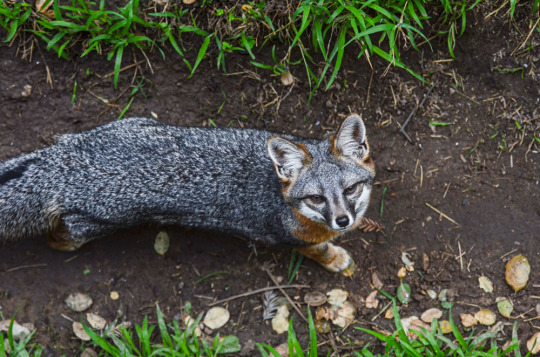
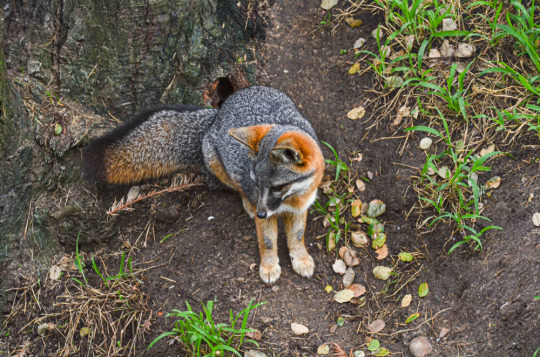
ISLAND FOX
Urocyon littoralis
©Laura Quick
The island fox is a small fox that is native to six of the eight Channel Islands off the coast of California. There are six subspecies, each unique to the island it lives on, reflecting its evolutionary history. Island foxes are generally docile, show little fear of humans, and are easily tamed. source
Santa Cruz Island foxes faced bleak odds 16 years ago. But in a win for the tiny gray animals, the U.S. Fish and Wildlife Service announced that the Santa Cruz Island fox, plus two additional subspecies of island fox, have recovered so well that they can be removed from the Endangered Species List, marking the fastest recovery of any mammal under the Endangered Species Act. source
Other posts you might like:
Swift Fox
Fennec Fox
Red Fox
#channel island fox#island fox#Endangered species win#unlisted#foxes#urocyon littoralis#©laura quick#california#usa#santa cruz island fox#santa barbara zoo#santa barbara
35 notes
·
View notes
Photo



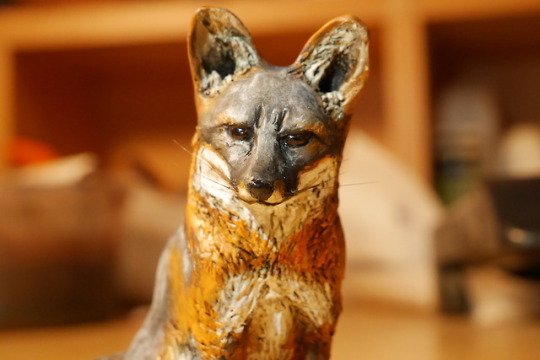


Island Fox (Urocyon littoralis)
Made for a very special someone as a present (it’s their favourite animal).
#Urocyon littoralis#fox#island fox#sculpting#animal sculpture#animal sculpting#super sculpey#fox figurine#fox miniature#myart
53 notes
·
View notes
Photo



Foxes of the genus Urocyon are the only know canids that can climb trees.
There is only two species: the gray fox ( Urocyon cinereoargenteus ) and the island fox ( Urocyon littoralis ).
-------
Zorros del género Urocyon son los únicos cánidos conocidos que pueden trepar árboles.
Hay sólo 2 especies:el zorro gris (Urocyon cinereoargenteus) y el zorro isleño (Urocyon littoralis).
#Urocyon#dogs#foxes#animals#Canidae#gray fox#island fox#canids#spanish post#español#perros#animales#zorros#caninos#canidos#Urocyon cinereoargenteus#Urocyon littoralis#Carnivora#Mammalia#Animalia#zoology#Biología#Biology
55 notes
·
View notes
Photo
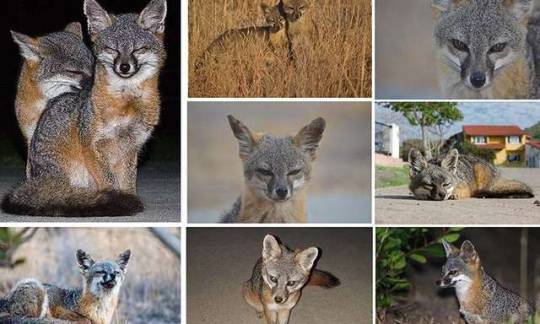
Channel Island foxes make a comeback
Visitors of Southern California's Santa Catalina Island in recent years have likely caught sight of what first may appear to be small dogs or half-grown housecats. The docile creatures, sporting bushy salt-and-pepper tails, charcoal and brown camouflage coats and outsized ears, seem ready to overrun the island.
But nearly 25 years ago, that was far from the case for the Channel Island foxes. The dwarf descendants of the gray fox, possibly first brought to the islands about 7,000 years ago as companions by indigenous people, were in danger of extinction. The population of creatures had been pushed to the brink of collapse by disease and hungry predators.
With the support of conservationists and fox fans, the federal government launched a massive recovery effort that included, among other things, a vaccination program to protect the foxes against canine distemper, efforts to control predators and a mating program.
The foxes have quickly rebounded across the Channel Islands. After a low in 2000 of just 100 on Catalina, the fox population has increased to more than 1,500. On the smaller San Miguel Island, the fox population rose from a low of just 15 to more than 450 over the same period, according to the U.S. Fish and Wildlife Service.
Now, scientists at USC Dornsife's Wrigley Institute for Environmental Studies are researching the foxes' genetics through a comparison of their genomes before and after the near-collapse to see if their genetic diversity has returned to pre-collapse levels. Genetic diversity is an important factor contributing to a more resilient species.
#Island Fox#Channel Islands Fox#Urocyon littoralis#Urocyon#Canidae#Caniformia#Carnivora#Mammalia#mammal#fox#Santa Catalina Island#Channel Islands#California
19 notes
·
View notes
Text
Urocyon littoralis
Channel island foxes aren’t in the vulpes genus, which means they aren’t really foxes. They’re one of many “false foxes,” which includes the bat-eared fox, the crab-eating fox, and the grey fox. The channel island fox shares the urocyon (which essentially means “tail dog”) genus with the larger grey fox, which is its ancestor.
Grey foxes live on the mainland of the United States, while island foxes live exclusively on six of California’s eight Channel Islands: Santa Rosa, San Clemente, San Nicolas, San Miguel, Santa Catalina, and Santa Cruz. Because they can’t easily travel between islands, six subspecies of island fox have developed, each one exclusive to and named after each of those six islands.

Roughly the size of a house cat, the island fox is one of the smallest canines in the world but is, ironically, the largest native mammal of the Channel Islands. Having no natural predators (multiple subspecies were nearly hunted to extinction by the invasive golden eagle in the late 1900s to early 2000s. A successful conservation project later reestablished their population and removed golden eagles from the area.), they are extremely bold and show no fear around people, completely the opposite of their elusive larger ancestor.
Like the majority of fox species, island foxes are omnivores and will eat whatever is available. This includes fruit, fish, rodents, plants, and bird eggs, which, just like the grey fox, they can climb into trees to search for.

The social structure of the island fox is similar to that of many fox species. Pairs are generally monogamous, meaning they mate for life, and they share a small territory that oftentimes overlaps with their relatives’ territories.
I rate the island fox 20/10. Adorable


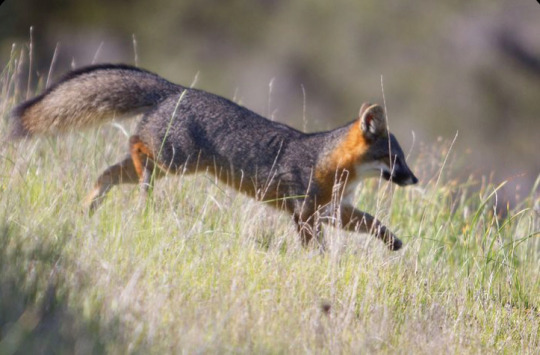

#fox#animal#animals#Channel Islands#nature#wildlife#channel island fox#world#wild animals#canine#canid#island fox#California
472 notes
·
View notes
Photo

Urocyon littoralis - Island Fox
#island fox#fox#urocyon#littoralis#canidae#carnivora#mammalia#chordata#animalia#dwarf#near threatened#north america#endemic#california#channel islands#chaparral#forest#grassland#coastal#terrestrial#faunal frontier#the faunal frontier
45 notes
·
View notes
